Julian Dal Molin was born in Schio (Vicenza) in 1960; he lives and works in San Vito di Leguzzano (VI). Dal Molin’s path of training and experimentation led him to approach modern and contemporary art to identify his own working direction in 1987. His works are selected for participation in group shows at the Bevilacqua La Masa Foundation in Venice in 1984, 1989 and 1991; in 1992 he has a solo room at the same Foundation and in 1993 he is present in DETERRITORIAL at the XLV Venice Biennale. Dal Molin’s recent research focuses on space: the artist seeks a synergy with the site that houses his works, thinking his works both in connection with the space that surrounds them and with each other. Moreover, Dal Molin’s recent production is underpinned by meticulous research on color, which draws its origins from the history of painting. The research on color is also manifested in his three-dimensional works, projects and drawings, which are the result of a synthesis process aimed at removing excess and superfluous to give voice to color and forms. Julian Dal Molin talks about his art in this conversation with Gabriele Landi.
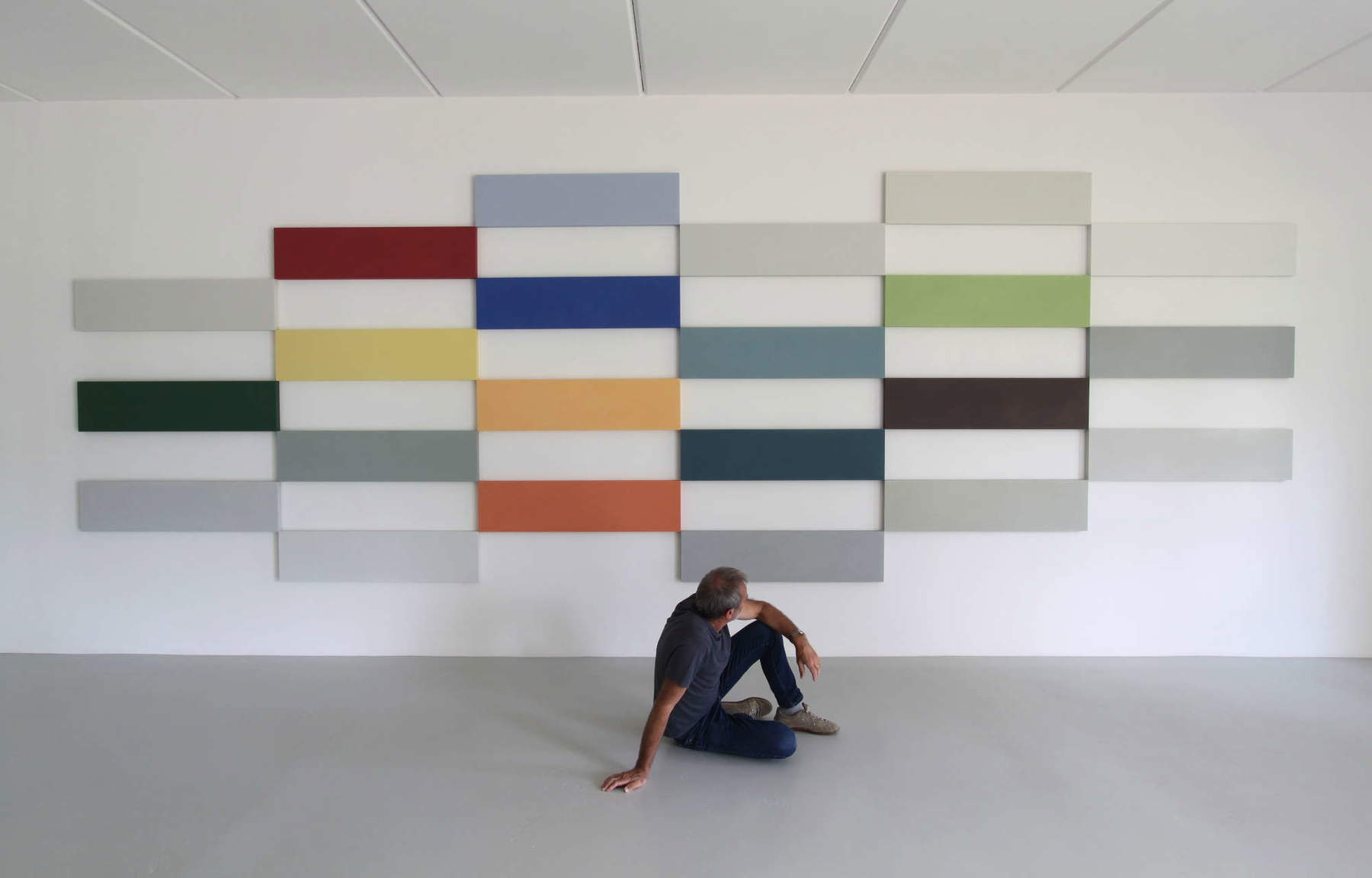
GL. Giuliano, let’s start from the beginning. In what years does your artistic activity take off and what work were you doing at the beginning?
GDM. I start very young as a self-taught artist in the mid-1970s and until almost all of the 1980s I experiment with various languages: from figurative resolved in various ways (these are the years of the Transavanguardia), abstraction, informal, then a work on materials and matter to arrive around 1988-1989 to clarify my ideas and begin my artistic path. These are works on wood with metal inserts, small reliefs that form very abstract horizons with a strong physicality. These early works already contain some elements that I later developed over time: they are concrete three-dimensional forms (almost never real sculptures), minimal relief shifts of the surface in which the paint appears; I later realized that these works had a strong relationship with light, shadow and space.
Then how does it evolve?
From this moment I started to make the work more and more essential. Within a couple of years I came to define a series of concave/convex forms on whose surface an orthogonal grid appeared, reducing the painting to a veiled trace. In the mid-1990s color reappears. Initially they are monochrome works with saturated colors: primaries, complementaries, composites but also black and white. Form and color have become the common thread in my work (there is a desire to break the mold, to break out of the limit represented by the painting/window that encloses the story in order to release the form/color into space) manifesting itself in installations with one or more three-dimensional elements designed for the place. These are works in which the strength of the form, the color relationships, the incidence of light and the resulting shadow, and, clearly, the relationship with the environment become important.
Looking at these works, is there a sensualization of form?
Yes, the forms are increasingly essential but their surface maintains an almost tactile sensibility and and luminosity.
Pictorially how did you make them?
As of this moment, the color is made by combining pigments, or acrylic colors, a binder and powders/sands of various kinds (initially I used rubber powder and then switched to glass microspheres and in recent years I use, almost always, quartz or marble sands). It is my intention to minimize the painterly gesture. The surface remains vibrant but there are no concessions to gesture; this reinforces the essentiality of the work. Form and color become one, as if to say: this work is made of color, form is color.
In this sense I am reminded of the work of Yves Klein for example....
Yes, many were the influences. Of course then over time interests change, so you come across different things, for example I remember in the 1990s I looked a lot at Kapoor. Remember when he was making those holes with blue which then happened to be the same one Klein used!
Is there a spiritual kind of tension in your work?
Yes, that is exactly the intention. Clearly it is a secular spirituality, mine is an attempt to go beyond the image. It is the will to create with my work a new space, a place where one can find oneself.
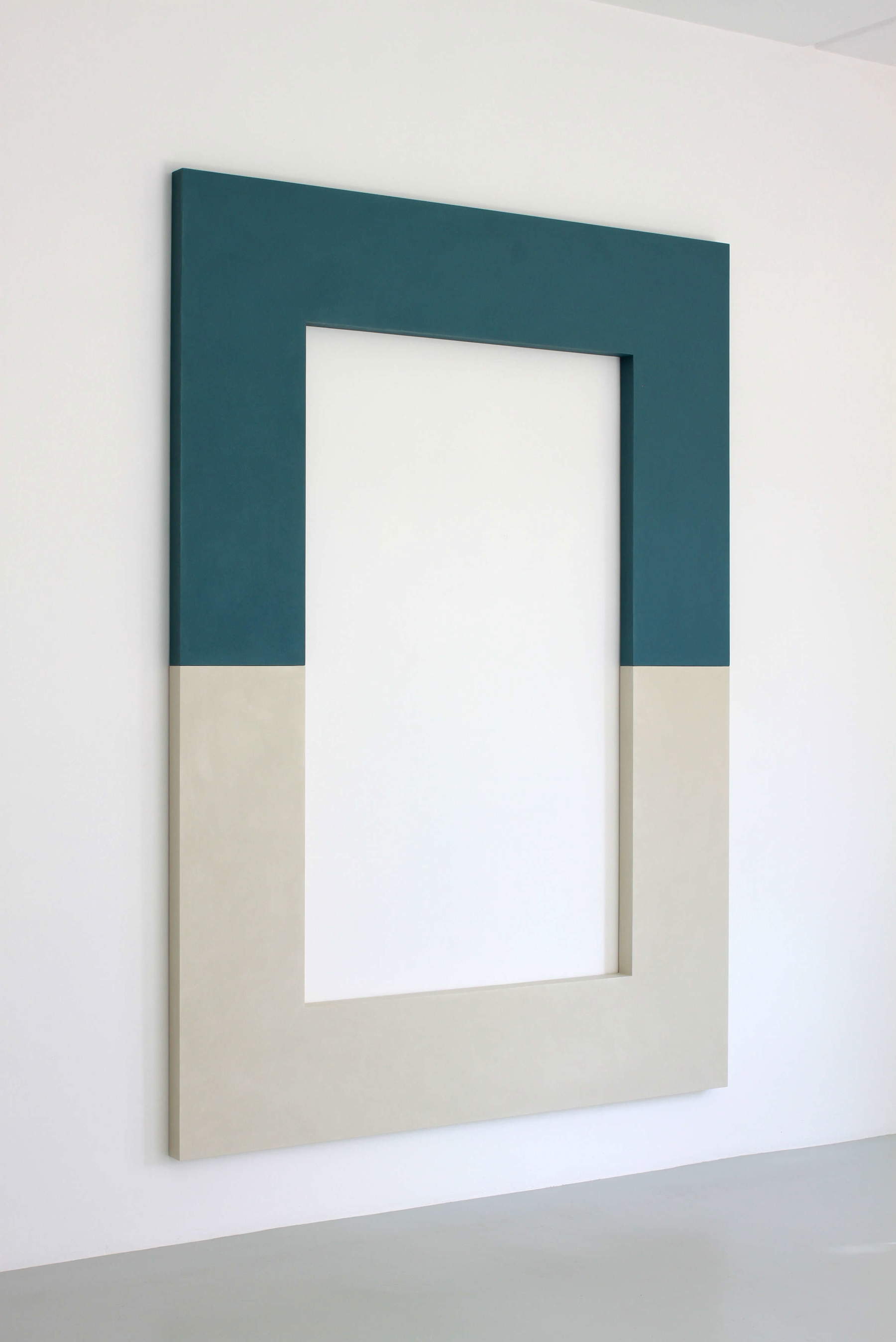
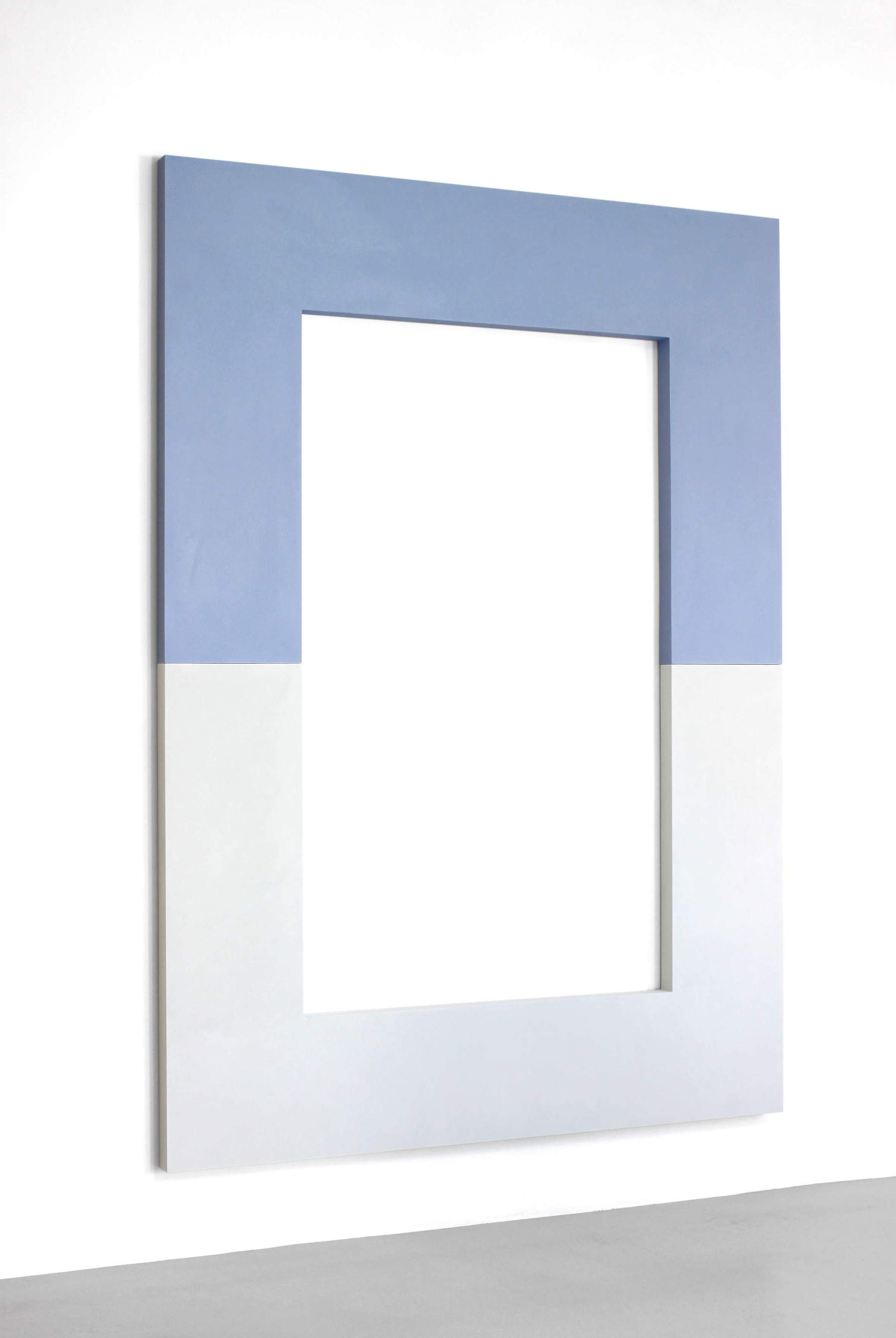
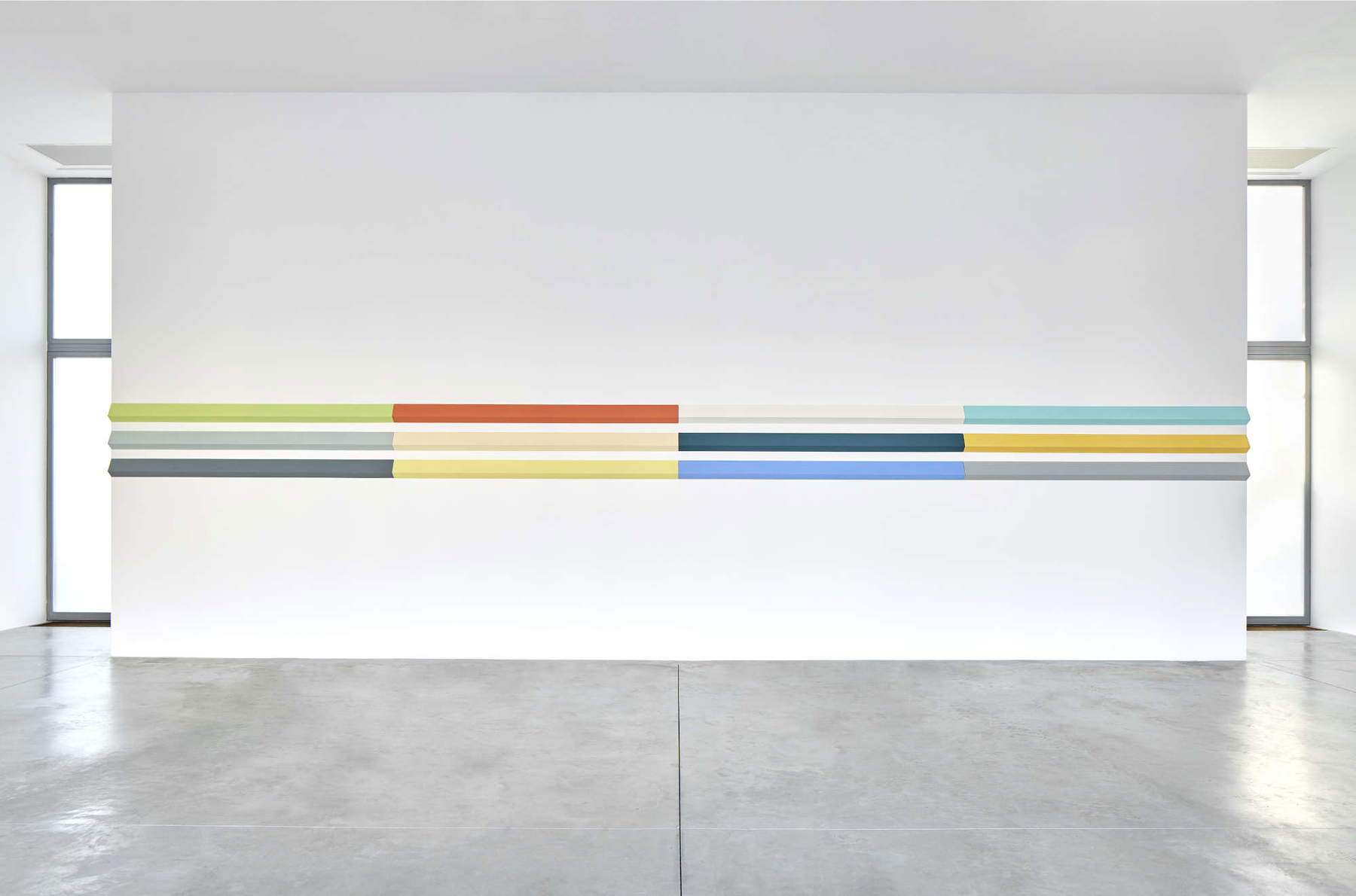
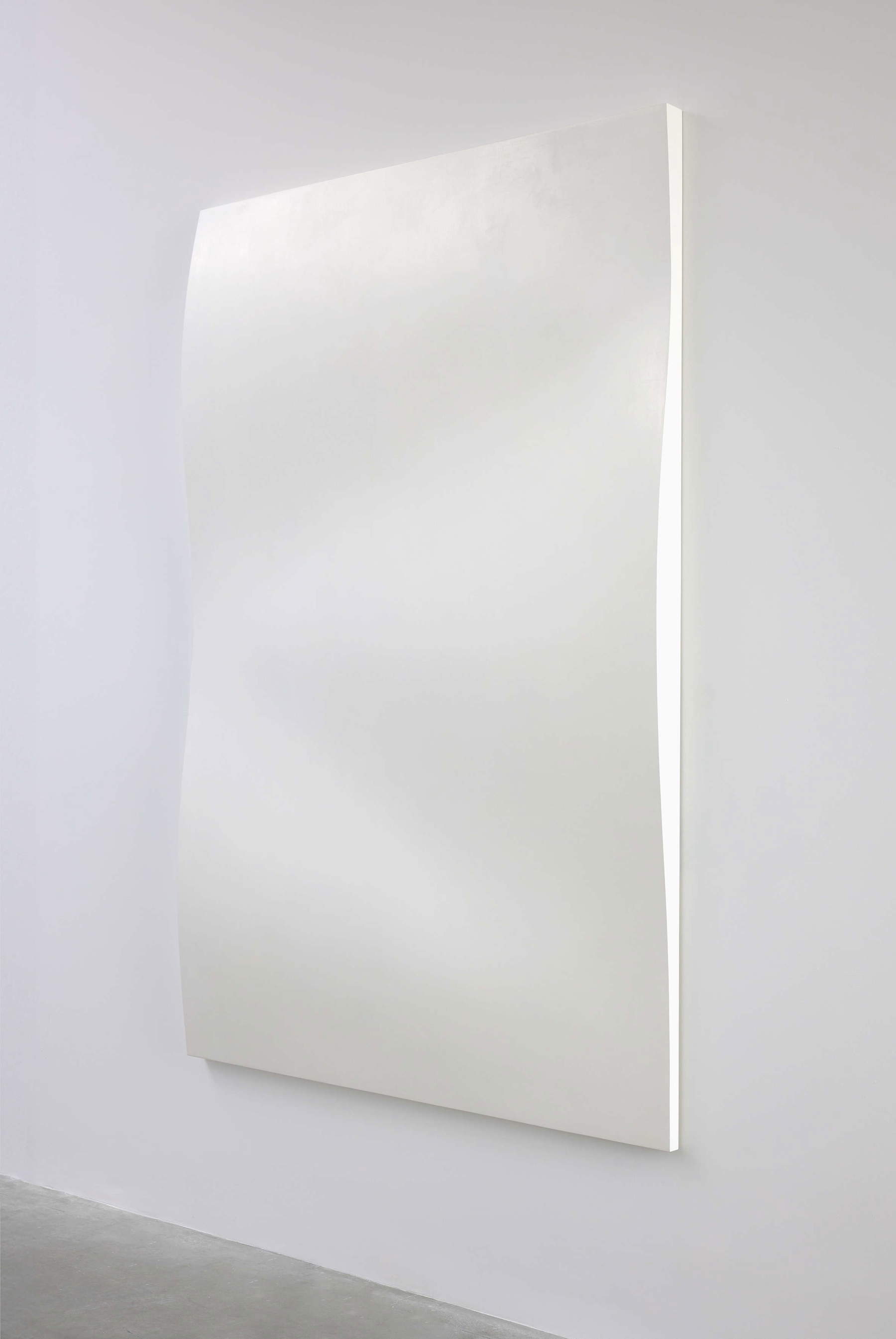

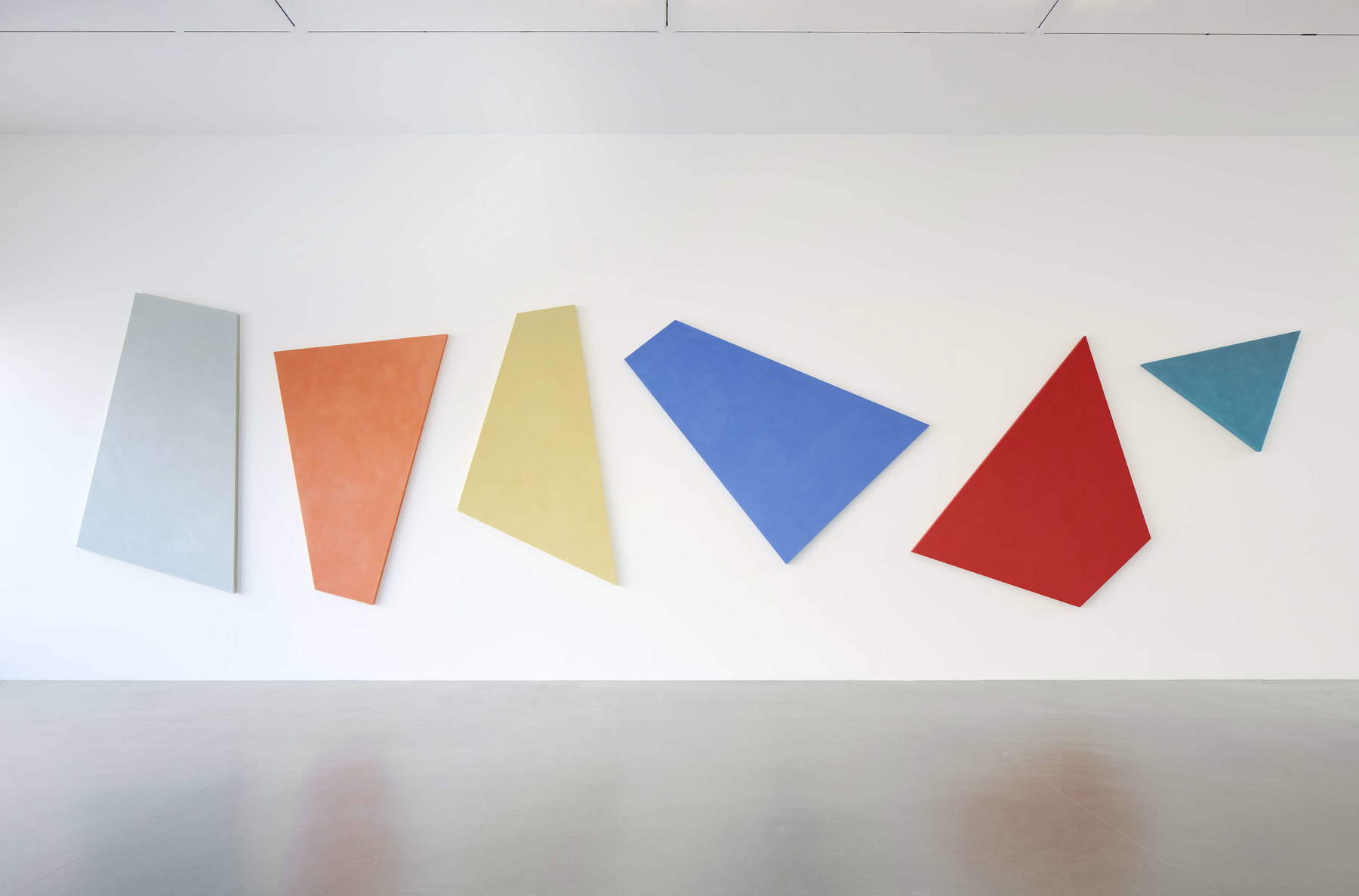
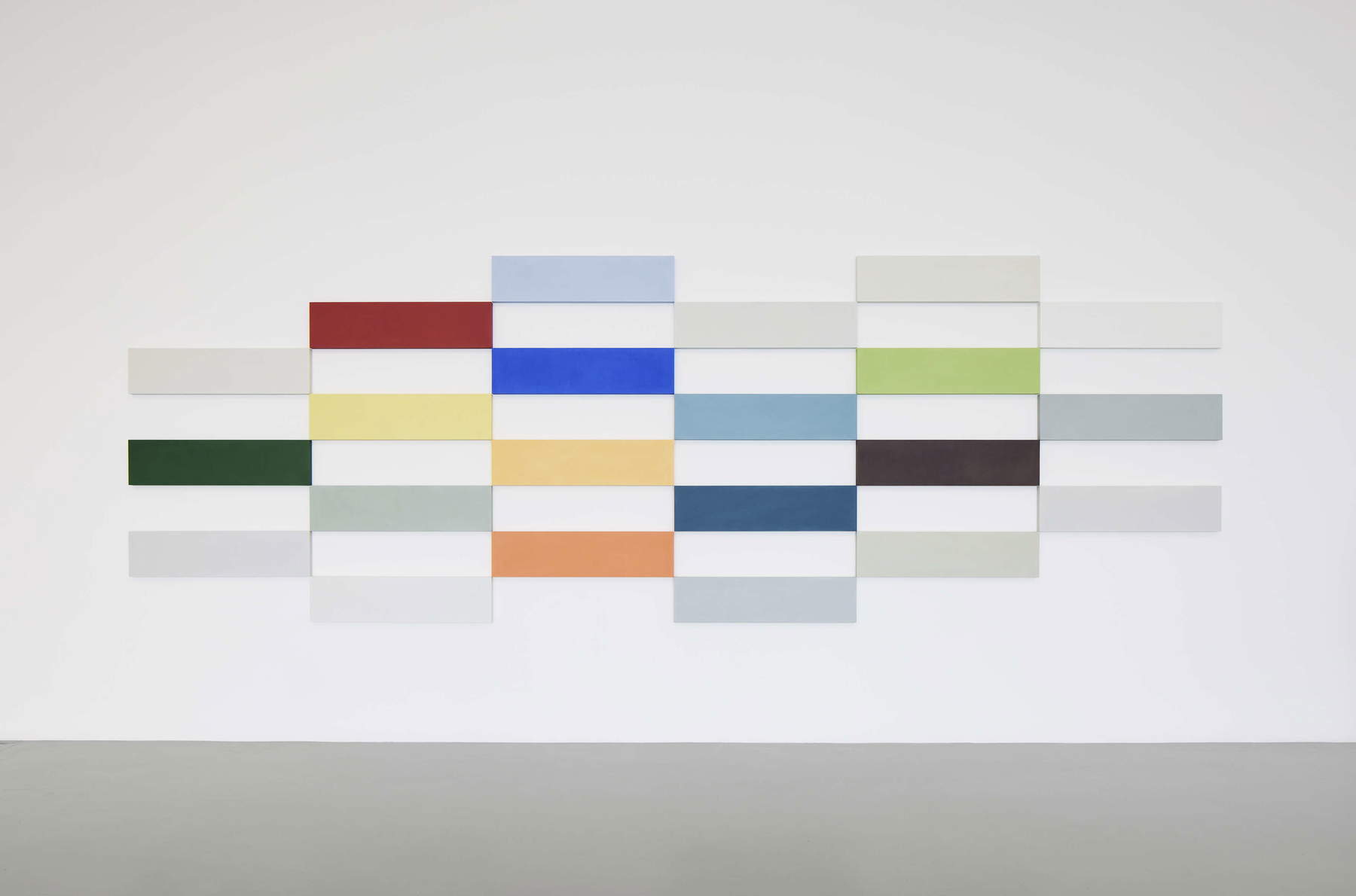
Is there obviously a tension to dialogue as well? In this sense also the dialogue with the space in which you go from time to time to insert your work is a vehicle of exchange, of encounter?
Yes, this is an essential dimension of making art. Besides being a personal need, art needs to go out, to meet people’s gaze; if there is not this encounter, which is my way of communicating, it is difficult to think that the work makes sense. Therefore it becomes important where and how you display the work and how you create the environment in relation to the person.
What is your relationship with geometry, I see that the forms you employ are related to it?
By my nature I have an aversion to rules, to calculation, to everything that is predetermined. Actually, with time, I have realized that these elements are the backbone of my work. I also realized that geometry has its own role since the shapes I build have to do with the world of numbers, with measurement... An important aspect is the construction of the works I make myself (drawing/design/three-dimensional construction). In all cases it is emotion and sensitivity that guide me and lead me to the work.
How important are light and rhythmicity in what you do?
Light on three-dimensional work is always decisive because it strengthens it and gives it life (if the light is natural there is a continuous change in the vision of the work). In works composed of several elements, rhythmicity is determined by both structure and color combination. These are the works that allow me to experiment with the need for synthesis, essentiality and at the same time to release color into more complex compositions.
Speaking of color, it seems to me that in your case there is a particular attention on your part to tradition, the painting of the past specifically tonal painting, that of your land, Veneto.

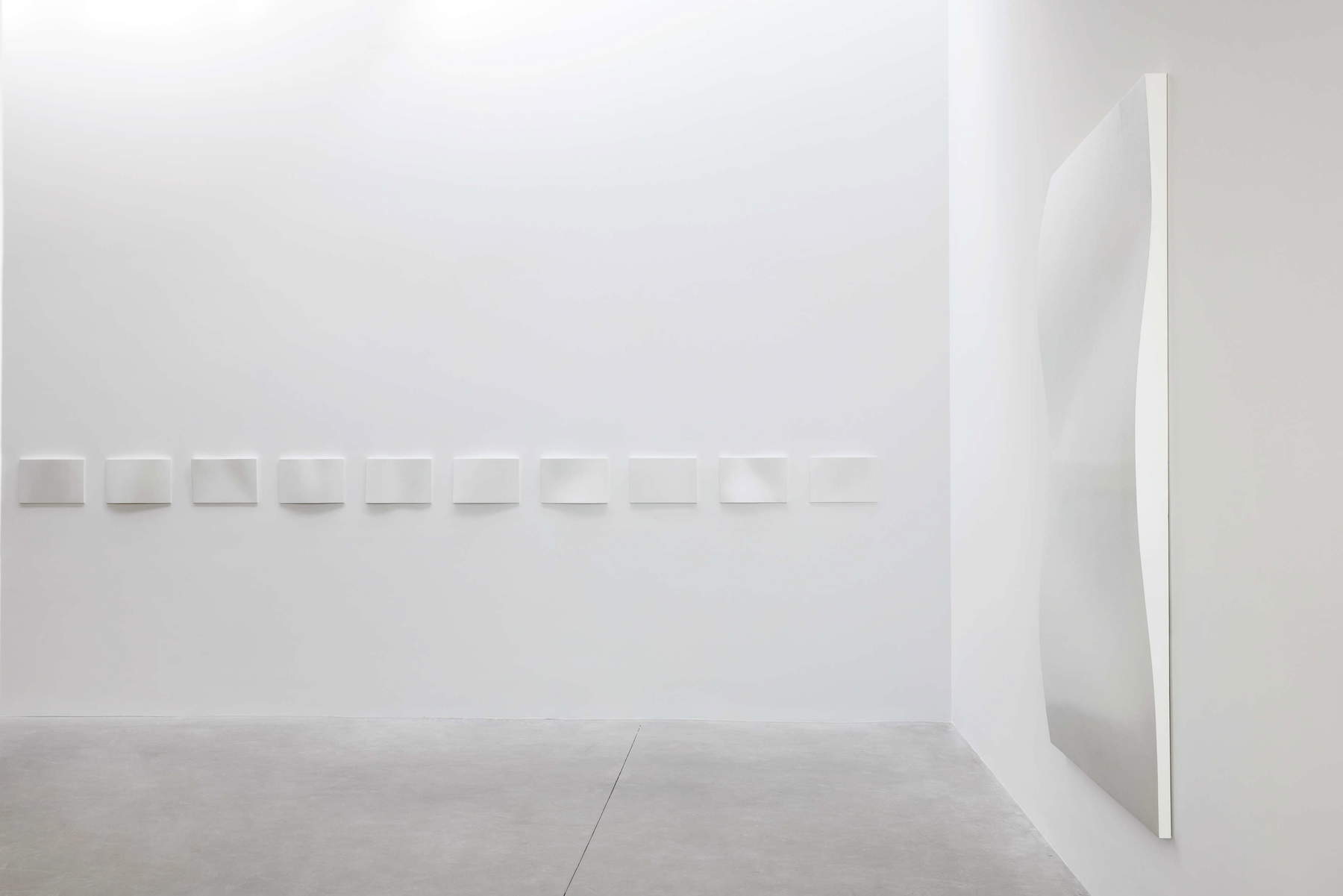
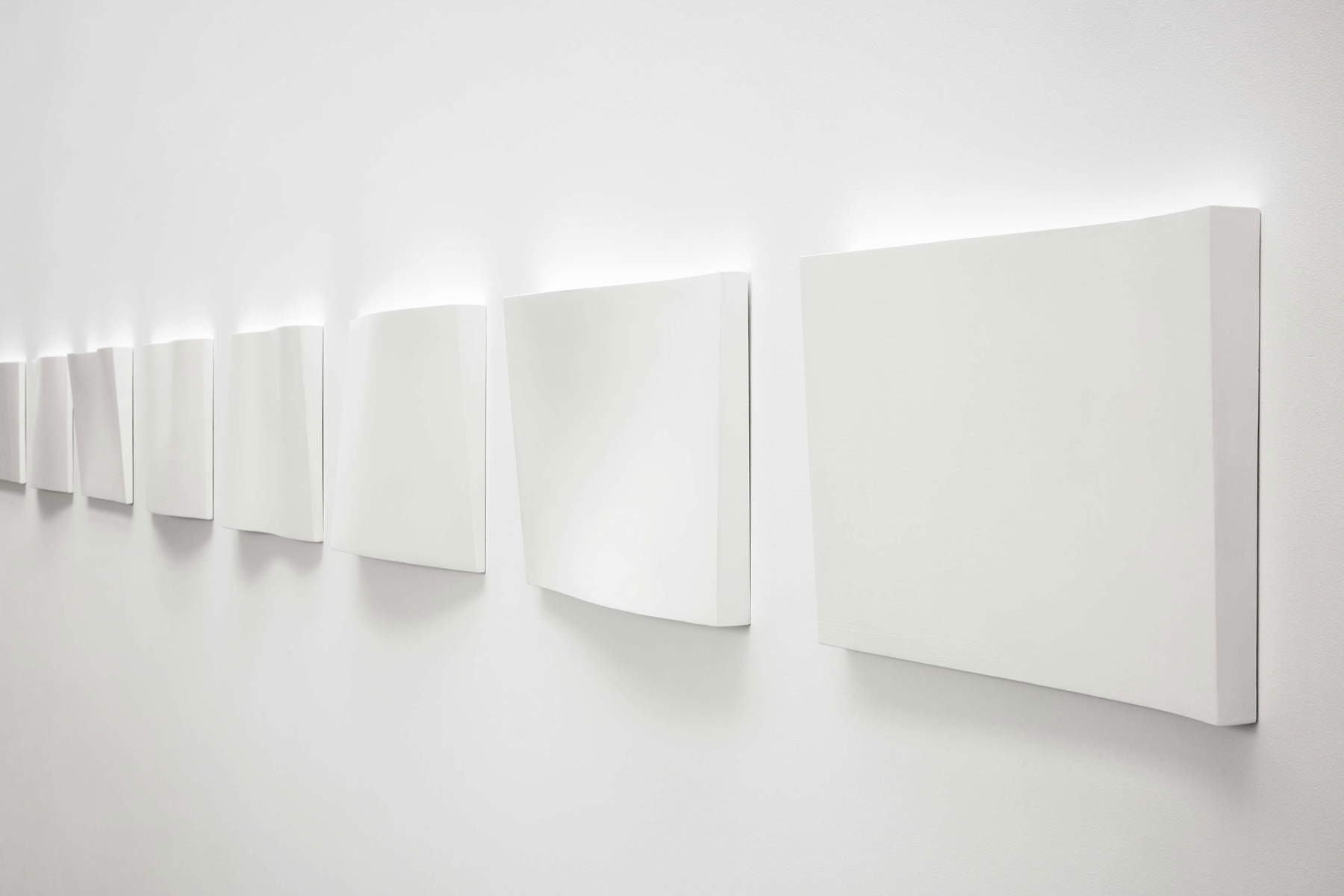
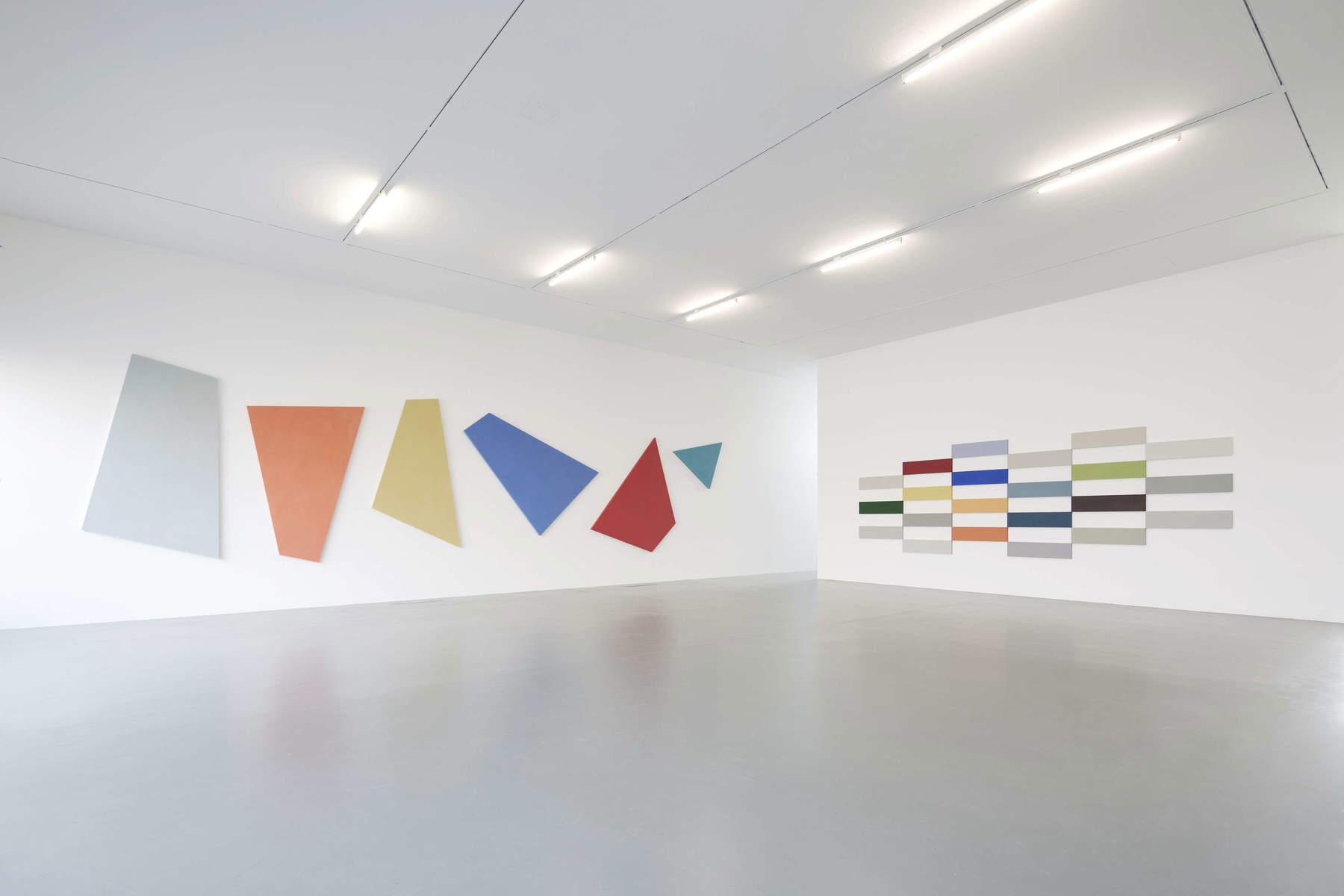

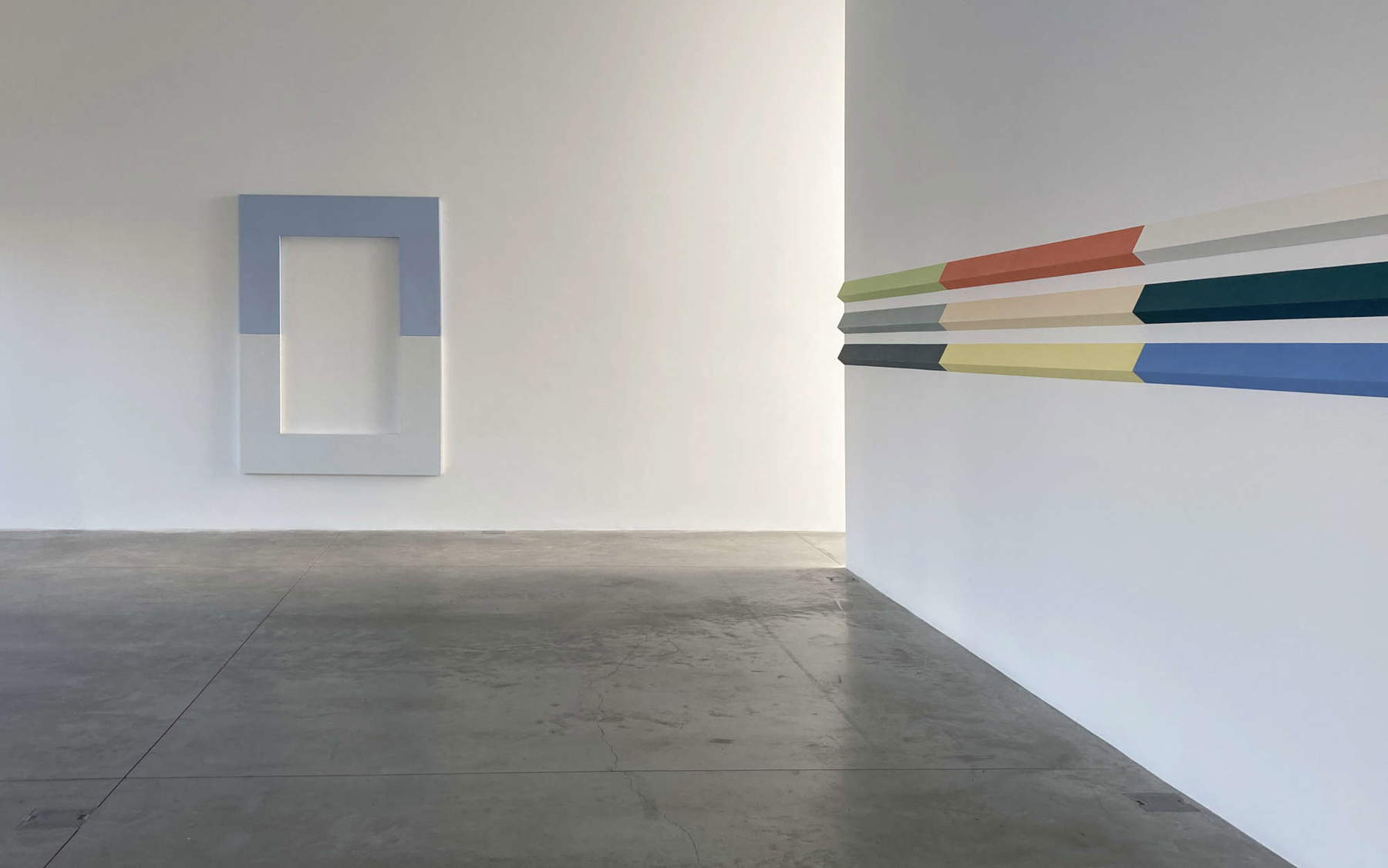
Yes, I used to look more at contemporary artists, today more at the art of the past. When I see the works of Bellini, Titian, Lotto I feel that they are an inexhaustible source of inspiration (just thinking about how they used color we are facing something extraordinary). All this is of great help and comfort to me.
This aspect seems palpable to me in what you do, I don’t say this to you out of flattery but because it is concretely felt in what I see....
Thank you! That’s something I like, this connection to our history our past with the art that came before us that somehow helps and gives support and vitality to the work, or at least I like to think so...
I saw that a few years ago you did an exhibition in a convent near where you were born, Schio, and the dialogue with the space and the place seems very strong to me!
This intervention stems from an emotional connection I have with this place. It was also a very interesting experience from a human point of view. I also had the opportunity to access spaces not usually open to the public and the complete freedom to create works that were in dialogue with this sacred space.
Somehow through this intervention you have revitalized the place, it seems to me that a very intimate form of dialogue is established between your intervention and the artifacts, works and signs inside the monastery...
I would say so, with the works in dialogue with the space and the sense of spirituality that emanates from this place.
Warning: the translation into English of the original Italian article was created using automatic tools. We undertake to review all articles, but we do not guarantee the total absence of inaccuracies in the translation due to the program. You can find the original by clicking on the ITA button. If you find any mistake,please contact us.